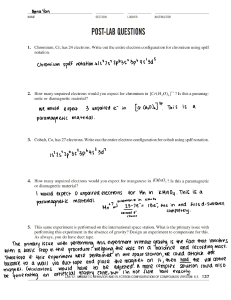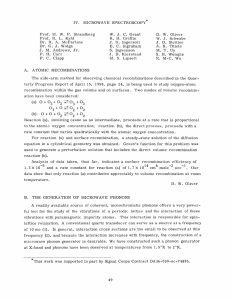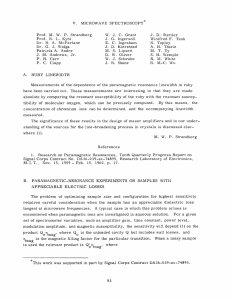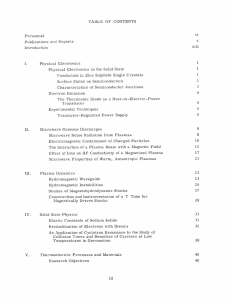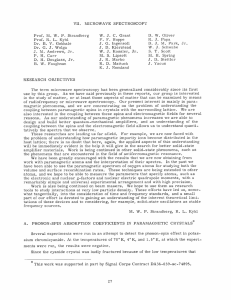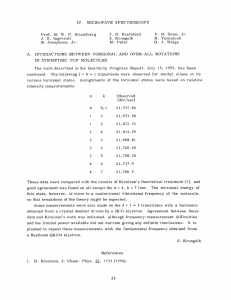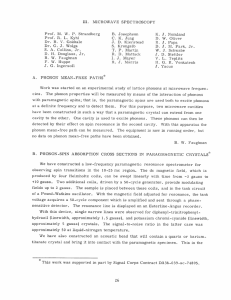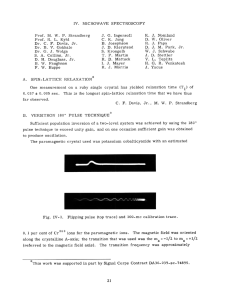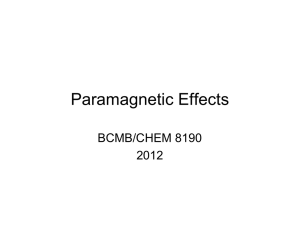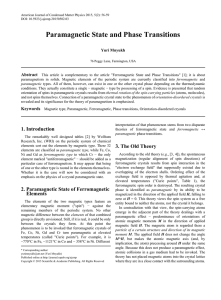VI. MICROWAVE SPECTROSCOPY M. S. Lipsett J.
advertisement
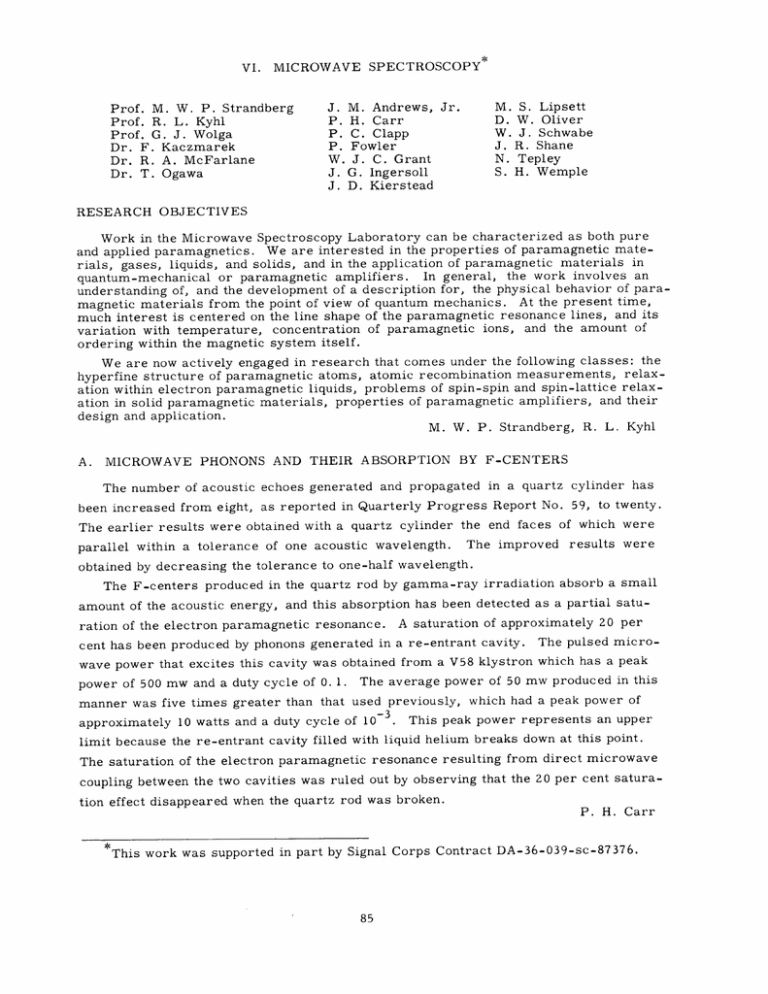
VI. MICROWAVE SPECTROSCOPY Prof. M. W. P. Strandberg Prof. R. L. Kyhl Prof. G. J. Wolga Dr. F. Kaczmarek Dr. R. A. McFarlane Dr. T. Ogawa J. P. P. P. W. J. J. M. D. W. J. N. S. M. Andrews, Jr. H. Carr C. Clapp Fowler J. C. Grant G. Ingersoll D. Kierstead S. Lipsett W. Oliver J. Schwabe R. Shane Tepley H. Wemple RESEARCH OBJECTIVES Work in the Microwave Spectroscopy Laboratory can be characterized as both pure and applied paramagnetics. We are interested in the properties of paramagnetic materials, gases, liquids, and solids, and in the application of paramagnetic materials in In general, the work involves an quantum-mechanical or paramagnetic amplifiers. understanding of, and the development of a description for, the physical behavior of paramagnetic materials from the point of view of quantum mechanics. At the present time, much interest is centered on the line shape of the paramagnetic resonance lines, and its variation with temperature, concentration of paramagnetic ions, and the amount of ordering within the magnetic system itself. We are now actively engaged in research that comes under the following classes: the hyperfine structure of paramagnetic atoms, atomic recombination measurements, relaxation within electron paramagnetic liquids, problems of spin-spin and spin-lattice relaxation in solid paramagnetic materials, properties of paramagnetic amplifiers, and their design and application. M. W. P. Strandberg, R. L. Kyhl A. MICROWAVE PHONONS AND THEIR ABSORPTION BY F-CENTERS The number of acoustic echoes generated and propagated in a quartz cylinder has been increased from eight, as reported in Quarterly Progress Report No. 59, to twenty. The earlier results were obtained with a quartz cylinder the end faces of which were parallel within a tolerance of one acoustic wavelength. The improved results were obtained by decreasing the tolerance to one-half wavelength. The F-centers produced in the quartz rod by gamma-ray irradiation absorb a small amount of the acoustic energy, and this absorption has been detected as a partial saturation of the electron paramagnetic resonance. A saturation of approximately 20 per cent has been produced by phonons generated in a re-entrant cavity. The pulsed microwave power that excites this cavity was obtained from a V58 klystron which has a peak power of 500 mw and a duty cycle of 0. 1. The average power of 50 mw produced in this manner was five times greater than that used previously, which had a peak power of - 3 . This peak power represents an upper approximately 10 watts and a duty cycle of 10 limit because the re-entrant cavity filled with liquid helium breaks down at this point. The saturation of the electron paramagnetic resonance resulting from direct microwave coupling between the two cavities was ruled out by observing that the 20 per cent saturation effect disappeared when the quartz rod was broken. P. H. Carr This work was supported in part by Signal Corps Contract DA-36-039-sc-87376.
